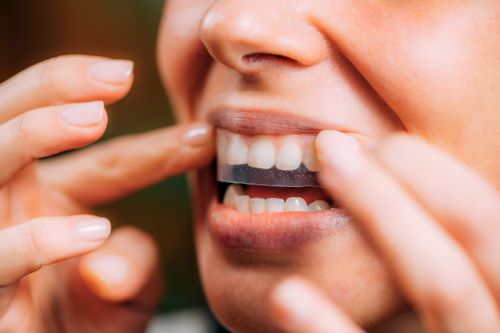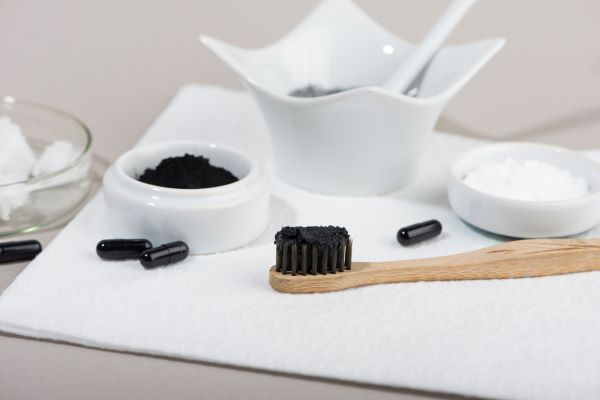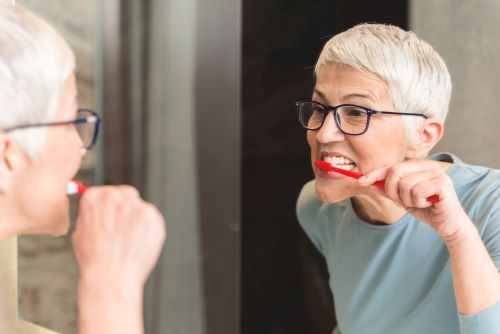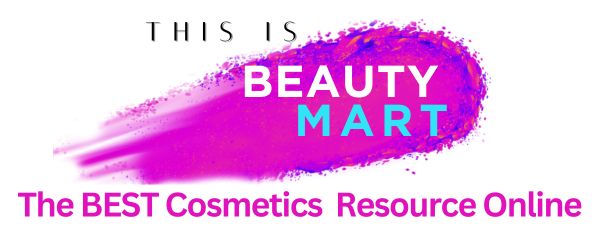Are you tired of hiding your smile because of stained or yellow teeth?
According to the American Dental Association, almost 90% of dental patients request teeth whitening.
This comprehensive guide will walk you through the best teeth whitening kits and products, as well as natural methods for achieving that dazzling sparkle.
Don’t wait another day; let’s reclaim your confident smile together!
Key Takeaways
Table of Contents
Teeth Whitening Products
Exploring the world of teeth whitening products, like the entire plethora of cosmetics, can feel overwhelming due to the array of varieties available.
Toothpaste
Whitening toothpaste typically contains low concentrations of carbamide peroxide or hydrogen peroxide to lighten tooth color. However, contrary to some beliefs, they do not contain bleach.
Gels
Whitening gels are another popular product for teeth brightening. These gels often carry a higher concentration of active ingredients which results in quicker and more noticeable results.
Strips
Generally coated with a whitening gel, these thin, flexible strips mold to your teeth and provide a uniform layer of whitening.
Trays
Teeth whitening trays come filled with a special gel that, when placed against your teeth, works to lighten the color.
Whitening Kits
Comprehensive kits typically include all you need for at-home teeth whitening including an LED device, a hydrogen peroxide whitening gel, a charger, and a carrying case.

The Process
Diving into the world of teeth whitening can be intriguing and exciting, especially when exploring the process.
Here is a general outline:
1. The initial step often involves a thorough dental cleaning. Your dentist will remove plaque and tartar build-up that could prevent even whitening.
2. Next, if using a professional treatment, your gums get protected with a barrier to avoid irritation from the bleaching agent.
3. A high-strength whitening gel containing active ingredients like hydrogen peroxide or carbamide peroxide gets applied to your teeth.

4. Some treatments involve the use of an LED light aimed at your teeth to boost the effectiveness of the bleach.
5. The gel stays on for around 15 – 30 minutes before being rinsed off.
This application process might be repeated several times in one sitting depending upon the desired results.
At Home Process
1. You’ll begin by brushing your teeth with regular toothpaste.
2. Then you’ll apply the supplied gel or paste it onto the included tray or strip.
3. Place this against your teeth, taking care not to let it touch your gums too much to avoid sensitivity.
4. After waiting for the instructed time period (typically between 5 – 30 minutes), you’ll remove the tray or strip and rinse out your mouth.
The Kit
Teeth whitening kits offer a convenient and effective solution for removing dental stains and achieving that desired bright smile.
These kits typically include an LED teeth whitening device, hydrogen peroxide whitening gel, a device charger, and a carrying kit.
The LED light activates the bleaching agent in the gel to break down stubborn stains on your tooth enamel.
SmileDirectClub Bright On Premium Teeth Whitening Kit stands out as the best overall teeth whitener.
It’s not only recommended by dentists but is also easy to use right at home. For those seeking superior results, professional teeth whitening kits are also available.
Products like Nite White ACP have been proven safe and comfortable while delivering noticeable improvements in your teeth’s brightness.
Toothpaste
Hydrogen peroxide toothpaste is a great option for daily teeth whitening.
It contains abrasive ingredients that are effective in removing bacteria and stains from your teeth.
Unlike teeth bleaching products, which use hydrogen peroxide to whiten tooth enamel, whitening toothpaste do not contain bleach.
However, they may have low concentrations of carbamide peroxide or hydrogen peroxide.
These toothpastes work by removing surface stains and brightening your teeth.
So, if you’re looking for a simple and convenient way to maintain a brighter smile and complement your luscious lips, using a whitening toothpaste can be an effective solution for you.
Remember: Whitening toothpastes are not meant to drastically change the color of your teeth or treat deep intrinsic stains.
For more significant results, you may need to consider other teeth whitening methods such as professional treatments or at-home kits with higher concentrations of whitening agents like hydrogen peroxide.
Strips

Whitening strips are a popular at-home teeth whitening option. These plastic strips are coated with a peroxide gel that is designed to whiten your teeth.
They are individually wrapped and come in sets for the upper and lower teeth.
Whitestrips were introduced in the late 1980s and have been proven effective in removing surface stains from tooth enamel.
One of the best whitening strip options on the market is Crest 3D Whitestrips Professional Effects.
This product has been recommended by dentists and consumers alike for its effectiveness in delivering noticeable results.
The key to their success lies in the delivery method – when you apply the strips, your teeth absorb the whitening agents, allowing them to work their magic.
With their convenience and effectiveness, whitening strips offer an easy way to achieve a brighter smile without having to visit a dental office.
So if you’re looking for an affordable and convenient way to whiten your teeth at home, give whitening strips a try!
Gel
Whitening gels are peroxide-based and they work by applying the gel directly to your teeth using a small brush.

These gels often contain natural ingredients like coconut oil or aloe vera, which can provide additional benefits for your oral health.
Dentists also use specific whitening gels for their professional treatments, ensuring that you get the best results possible.
However, it’s important to be aware of potential side effects both in the short-term and long-term when using these gels.
So make sure to read up on any warnings or instructions provided with the product before starting your teeth whitening journey.
Laser
Laser teeth whitening is a highly effective procedure that utilizes a light-activated whitening gel and a laser for optimal results.
This method is more powerful than at-home whitening kits, delivering noticeable improvements in the shade of your teeth.
One popular technique is Zoom teeth whitening, which involves using a special lamp or laser to enhance the effects of the whitening gel.

It’s important to note that laser teeth whitening should only be performed by a trained dental professional to ensure safety and achieve the best outcome.
With proper habits and good oral hygiene practices, laser teeth whitening can provide long-lasting results, giving you a brighter smile that you’ll love flaunting.
At Home Whitening
At-home teeth whitening kits are a popular and convenient option for achieving a brighter smile.
These kits typically include an LED teeth whitening device, hydrogen peroxide gel, a charger, and a carrying kit.
With the rise of at-home options, it’s important to choose products that are safe and reliable.
One effective ingredient found in many whitening formulas is hydrogen peroxide. It has been proven to whiten teeth effectively by targeting surface stains and discoloration.
Smile Direct Club offers an at-home kit that includes an LED light and a 6-month supply of whitening pens for your convenience.
Natural remedies can also be used to whiten your teeth at home. Hydrogen peroxide is one such natural ingredient that has teeth-whitening properties.
You may consider using it as part of your regular oral care routine.
However, it’s essential to remember that not all natural methods are equally effective or safe for your dental health.
Consulting with a dental professional before trying any new product or remedy is always recommended.
Whitening Ingredients
Teeth whitening products typically contain a variety of ingredients.
These ingredients work together to help brighten and whiten your teeth.
Here are some common ingredients found in teeth whitening products:
Hydrogen peroxide (H2O2)
This is one of the most commonly used active ingredients in teeth whitening products. It helps to bleach the tooth enamel, removing stains and discoloration.
Carbamide peroxide
Another popular bleaching agent, carbamide peroxide breaks down into hydrogen peroxide when applied to the teeth.
It effectively removes surface stains and can penetrate deeper into the enamel to target intrinsic stains.
Baking soda
Known for its mild abrasive properties, baking soda gently polishes the tooth surface, removing superficial stains caused by coffee, tea, or red wine.
Activated charcoal

This ingredient helps to absorb and remove surface stains from the tooth enamel. It works by binding to substances that cause discoloration, leaving your teeth looking brighter.
Dairy products
Certain dairy products like cheese and yogurt contain lactic acid, which has been shown to promote remineralization of tooth enamel and help prevent tooth decay. They can also contribute to a brighter smile.
Coconut oil
Although not a traditional whitening ingredient, coconut oil has gained popularity as a natural way to improve oral health. The practice of oil pulling involves swishing coconut oil around in your mouth for several minutes each day to remove bacteria and plaque buildup.
Sunflower oil and sesame oil
These oils are also commonly used in oil-pulling practices due to their antimicrobial properties. They can help enhance oral health and contribute to a cleaner, healthier mouth.
Peroxide
The active ingredient in most teeth whitening products is peroxide, usually hydrogen peroxide or carbamide peroxide.
These chemicals work by breaking down the stains on your teeth into smaller pieces, which makes your teeth appear brighter and whiter.
The concentration of peroxide in at-home teeth whitening systems ranges from 3% to 20%, while in-office treatments can contain higher percentages, ranging from 15% to 43%.
It’s important to note that using a high concentration of hydrogen peroxide without following safety guidelines can potentially cause side effects and damage to your teeth.
Dentists recommend using peroxide for teeth whitening with caution and under proper guidance.
Instant Teeth Whitening
If you’re looking for quick results, instant teeth whitening options are available.
One popular choice is the Smile Direct Club LED Light and 6-Month Pen Supply Teeth Whitening Kit, which is considered one of the best kits on the market.

This kit includes an LED teeth whitening device, hydrogen peroxide gel, a charger, and a carrying case.
By using this kit as directed, you can achieve noticeable results in a short amount of time.
It’s important to note that while instant teeth whitening products can provide faster results compared to other methods, it’s still crucial to use them safely.
DIY methods that involve household products or pantry staples may be tempting but can actually be harmful to your teeth.
Research and clinical studies have proven that professional supervision is key to ensuring safe and effective tooth whitening.
So always consult with your dentist before using any instant teeth whitening products for optimal safety and best results.
Professional Teeth Whitening
Professional teeth whitening is a popular option for achieving a brighter smile.
Whether you opt for an in-office treatment or take-home whitening kits, these professional methods can help remove stubborn stains and discoloration.

In-office treatments are performed by experienced dental professionals who use specialized equipment and high-concentration bleaching agents to deliver quick and noticeable results.
On the other hand, take-home kits prescribed by dentists offer convenience and flexibility, allowing you to whiten your teeth at your own pace.
These professional-grade products often contain a higher concentration of whitening agents compared to over-the-counter options, ensuring effective stain removal.
Consider consulting with a dental clinic for guidance on the best professional teeth whitening option for you.
Sensitive Teeth Whitening
If you have sensitive teeth, finding the right teeth whitening method is crucial to avoid discomfort.
Aggressive bleaching can increase tooth sensitivity and even lead to changes in tooth structure.
It’s estimated that over 60% of Americans have naturally sensitive teeth due to factors like genetics, thin enamel, or damaged teeth.
When it comes to sensitive teeth whitening, it’s important to choose a product that is gentle on your enamel and gums.

One top pick for people with tooth sensitivity is Crest Whitestrips for Sensitive Teeth.
These strips are designed specifically for those who experience discomfort during whitening treatments.
They contain a lower concentration of the active ingredient, hydrogen peroxide, which helps minimize sensitivity while still delivering noticeable results.
Additionally, Sensodyne provides a simple guide to teeth whitening and offers recommendations for the best whitening toothpaste for your smile.
By opting for these products and following their instructions carefully, you can achieve a whiter smile without sacrificing your oral health or experiencing unnecessary pain.
Price Range
Understanding the cost of teeth whitening is essential in making an informed decision.
Here’s a breakdown of some prices that you might expect to see for different teeth whitening options:
| Teeth Whitening Option | Average Price Range |
|---|---|
| Take-home teeth whitening kits from dentist | $200-$400 |
| Over-the-counter teeth whitening kits | Under $30 to over $150 |
| In-office teeth whitening services | Starts from $900 |
| Over-the-counter kits | As low as $20 |
| In-office procedures | Up to $1,000 |
| Custom-made whitening trays | $400 or more |
| Dentist-prescribed kits | $100 to $400 |
It’s important to note that while the price of teeth whitening varies widely, so does the effectiveness of different products and methods.
Make sure to do your research and consult with your dentist to find the method that best suits your budget and desired results.
Brands
When it comes to teeth whitening, various brands offer products that can help you achieve a brighter smile. Here are some top brands and their notable products:
| Brand | Product | Description |
|---|---|---|
| Crest | Crest 3D Whitestrips Professional Effects | Rated the best overall whitening strips for 2023, these strips are designed to remove 14 years of teeth stains for a whiter smile. |
| Colgate | Optic White High Impact Whitening Toothpaste | A popular choice, this toothpaste promises brighter teeth in just a few weeks with its hydrogen peroxide content. |
| Oral-B | 3D White Brilliance Toothpaste | This toothpaste removes surface stains and prevents future ones, giving you a whiter smile in just a few brushing cycles. |
| Philips | Zoom Whitening Pen | A convenient option for on-the-go use, this whitening pen is perfect for touch-ups and maintaining a bright smile. |
Remember, results may vary from person to person, and it’s always best to consult with a dental professional before starting any teeth whitening regime.
Types of Teeth Whitening
There are different types of teeth whitening methods that can help you achieve a brighter smile. Some popular options include:
1. In-office whitening
This professional treatment is done at the dental office and involves using a higher concentration of whitening agents for faster results.
2. Take-home whitening kits
These kits typically include custom-made trays that you can wear with whitening gel at home, allowing you to whiten your teeth at your own convenience.
3. Whitening toothpaste
Toothpaste designed for whitening often contain more abrasives and detergents to remove stubborn stains from the surface of your teeth.
4. Whitening strips
These thin, flexible strips are coated with a whitening gel and are placed directly on your teeth to bleach away surface stains.

5. Whitening pens
These convenient pens allow you to apply a whitening solution directly onto your teeth for targeted stain removal.
6. LED light devices
Some whitening kits come with LED lights that help accelerate the whitening process by activating the ingredients in the gel.
Conclusion
Get ready to achieve the brightest smile with WSD Labs USA’s complete range of Teeth Whitening products.
Discover the best teeth whitening kits, like Smile Direct Club LED Light and 6-Month Pen Supply Teeth Whitening Kit, or Opalescence PF 35% Whitening Gel.
If you prefer natural methods, there are plenty of homemade options available too.
With a variety of affordable choices and professional recommendations, you’ll be on your way to whiter teeth in no time!
FAQs
Q: What is the best treatment to whiten teeth?
A: The best treatment to whiten teeth is a teeth whitening treatment using custom trays. Custom trays are made to fit the individual’s teeth and ensure even distribution of the whitening agent. This method provides the best whitening results compared to other options, such as teeth whitening strips, due to its personalized approach.
Q: Can yellow teeth become white again?
A: Yes, yellow teeth can become white again through various methods. These include professional teeth whitening treatments, using whitening toothpaste, and adopting good oral hygiene practices. However, the effectiveness of these methods may vary depending on the severity of the discoloration and the individual’s dental health. It is best to consult a dentist for appropriate treatment options.
Q: How can I whiten my teeth quickly?
A: If you want to quickly whiten your teeth, the best option is to talk to your dentist. They can provide you with teeth whitening gel, which is a highly effective method. However, remember that whitening may not be possible for all teeth without professional intervention. Using teeth whitening toothpaste and whitening mouthwash can also help remove surface stains from your teeth.
Q: Do dentists recommend teeth whitening?
A: Dentists generally recommend teeth whitening to brighten discolored teeth. While at-home whitening products may provide some results, the best teeth whitening products available at dental offices can deliver more dramatic and long-lasting results. Dentists can customize the treatment according to the individual’s needs, ensuring a safe and effective outcome.
Q: Can you turn yellow teeth white naturally?
A: Yes, you can turn yellow teeth white naturally. There are several home remedies that can help, such as brushing with baking soda, using hydrogen peroxide as a mouthwash, and rubbing lemon or banana peel on your teeth. However, these methods may take time and may not give you drastic results. It’s best to consult a dentist for professional whitening options.
Q: Can you reverse teeth yellowing?
A: Yes, you can reverse teeth yellowing. There are many products that contain whitening agents that can help provide teeth whitening results. Over-the-counter teeth whitening products, such as tray-based tooth whitening, can be effective in helping teeth to whiten. However, it is important to note that the degree of success may vary depending on the severity of the yellowing and individual factors.
Q: How long does it take for my teeth to go from yellow to white?
A: The time it takes for your teeth to go from yellow to white will depend on various factors, such as the severity of staining and the method chosen for whitening. Typically, over-the-counter whitening products may take several weeks to show noticeable results, while professional teeth whitening procedures conducted by a dentist can deliver faster and more dramatic outcomes. Teeth whitening vs. getting your teeth whitened refers to whether you choose to whiten your teeth at home or seek professional treatment.
Q: Is it better to get teeth whitened at the dentist?
A: Getting teeth whitened at the dentist is generally better compared to at-home whitening methods. Dentists use professional-grade whitening agents that can effectively remove stains and brighten teeth. The procedure is usually quicker and provides more dramatic results, as the whitening agent can penetrate the surface of the teeth better. Additionally, dentists can adjust the concentration of the whitening agent based on the individual’s needs, ensuring a safer and more customized treatment.
Q: Is it really necessary to whiten your teeth?
A: Whitening your teeth is not a necessity but rather a personal preference. However, if you desire a brighter smile, using a whitening product may be beneficial. These products typically contain a whitening agent that initiates a chemical reaction to remove stains and discoloration from the teeth, resulting in pearly whites. Professional options such as whitening trays, customized to fit your mouth, have undergone clinical trials and are safer due to years of experience in the field.
Q: Are there downsides to professional teeth whitening?
A: There are potential downsides to professional teeth whitening, such as increased sensitivity to cold food or drinks. Some methods, like using a blue light or Opalescence Go, may not always provide the desired result. Additionally, these treatments may not remove all types of stains. It is important to consult with a dentist from the American Academy of Cosmetic Dentistry to determine the best way to whiten your teeth. They may also recommend using products with potassium nitrate to minimize tooth sensitivity. Regular dental visits are still necessary to maintain oral health.
Q: What is the fastest way to whiten teeth?
A: The fastest way to whiten teeth is by using the best whitening toothpastes that are specifically designed to give good results quickly. However, for long-term use, it is advisable to consider different methods such as professional whitening treatments or at-home products like whitening strips or trays with gel. These options may take a bit longer to show results but can provide more lasting effects.
Q: Does teeth whitening hurt? Should teeth whitening hurt?
A: Teeth whitening procedures can cause some sensitivity or discomfort temporarily, especially if the whitening agent used is strong. However, it should not be overly painful or long-lasting. If teeth whitening causes severe pain or discomfort, it may indicate an underlying issue and it is important to consult a dentist to ensure there are no complications.
Q: When do teeth whitening strips expire?
A: Teeth whitening strips typically have expiration dates, usually written on the packaging. It is recommended to use them before the expiration date to ensure their effectiveness in achieving white teeth. Additionally, using a whitening tray, whether it is a custom tray from a dental visit or one that comes with the strips, can help enhance the whitening process. Before using any teeth whitening product, consulting with a dental professional or referring to clinical trials can provide valuable insights and guidance.
Q: What teeth whitening strips are the best?
A: The best teeth whitening strips are those that offer effective results without causing sensitivity or discomfort. Look for strips that are gentle on the teeth and gums, easy to use, and have a high concentration of whitening agents. Additionally, choose strips that fit securely and adhere well to the teeth for maximum contact and optimal whitening.
Q: How teeth whitening kit works?
A: A teeth whitening kit usually contains hydrogen peroxide gel or carbamide peroxide gel, which are the active ingredients. These gels break down stains on the enamel and dentin of the teeth, resulting in a whiter appearance. The gel is applied to custom-made trays that fit over the teeth, allowing for maximum contact and effectiveness. The process typically takes a few weeks of regular use for noticeable results.
Q: When teeth whitening doesn’t work?
A: Sometimes, despite our best efforts, teeth whitening treatments may simply not work. This can happen if the stains on the teeth are too deep or if the discoloration is caused by an underlying dental issue. In such cases, it is advisable to consult a dentist who can assess the situation and recommend alternative solutions for achieving a brighter smile.
Q: Can teeth whitening damage gums? Can teeth whitening damage teeth?
A: Teeth whitening procedures done by professionals are generally safe and unlikely to damage gums and teeth. However, overuse or misuse of over-the-counter teeth whitening products can cause sensitivity and gum irritation. It is important to follow instructions carefully and consult with a dentist to ensure the safest and most effective teeth whitening treatment.
Q: Will teeth whitening work on a dead tooth?
A: Teeth whitening will not work on a dead tooth. Dead teeth have no live nerve tissue, therefore, the whitening agents cannot penetrate the tooth’s enamel and reach the dentin layer to whiten the tooth. In this case, other dental procedures like veneers or crowns might be considered to improve the appearance of a dead tooth.
Q: What teeth whitening do dentists recommend?
A: Dentists often recommend professional teeth whitening procedures such as in-office bleaching or take-home whitening trays. In-office bleaching involves applying a strong whitening gel to the teeth and activating it with a special light. Take-home whitening trays, on the other hand, are custom-made to fit the patient’s teeth and are filled with a whitening gel that is worn for a specified amount of time each day. Both methods are highly effective in achieving a brighter, whiter smile.
Q: Why teeth bleaching?
A: Teeth bleaching is a popular cosmetic procedure that can make a significant improvement in your smile. It helps to remove stains and discoloration caused by various factors such as aging, smoking, and certain foods or beverages. Teeth bleaching is a safe and effective way to enhance the appearance of your teeth and boost your overall self-confidence.
Q: Will teeth whitening work on crowns?
A: Teeth whitening treatments are effective in removing stains and discoloration from natural teeth. However, the same cannot be said for crowns. Since crowns are made from materials that do not respond to bleaching agents, teeth whitening will not work on them. It’s best to consult with a dentist to explore alternative options for brightening the appearance of dental crowns.
Q: Is teeth whitening covered by insurance?
A: Teeth whitening is usually considered a cosmetic procedure and is not covered by insurance. Most dental insurance plans do not cover elective treatments like teeth whitening. However, it’s always a good idea to check with your insurance provider to confirm their specific coverage policies.
Q: Is teeth whitening bad? Why teeth whitening is bad?
A: Teeth whitening is generally safe, but there can be potential risks involved. Overusing whitening products or using them incorrectly can lead to tooth sensitivity, gum irritation, and enamel damage. Additionally, using a poor-fitting whitening tray or custom tray can cause the whitening gel to leak, increasing the risk of damage to the gums and soft tissues. It is always recommended to consult with a dental professional before undergoing any whitening treatment to ensure a safe and effective outcome.
Q: Will teeth whitening strips work on fillings?
A: Teeth whitening strips typically do not work on fillings as they are designed to whiten natural tooth enamel. Fillings are made from materials that do not bleach, so the strips may not have any effect on them. It is best to consult with a dentist for alternative whitening options for teeth with fillings.
Q: What are the best methods to achieve whiter teeth?
A: The best methods are professional whitening treatments at a dentist’s office, using ADA seal of acceptance tooth whitening products like white strips or kits for at-home use.
Q: Are there natural ways to whiten my teeth?
A: Yes, some natural ways include using apple cider vinegar and sodium bicarbonate as mild abrasives that can remove extrinsic stains caused by tobacco use and other factors.
Q: How do I choose the best option for teeth whitening?
A: Consider factors such as ease of use, long-term effects on health of your teeth and gums, visible results after first use, and product type.
Q: Does it matter if I have gum disease or gum irritation before a whitening procedure?
A: Yes. If you have gum issues, consult with dental professionals first as extensive usage of certain products could potentially cause permanent damage to both your gum tissue and natural teeth.
Q: Could tooth discoloration happen due to antibiotic use?
A: Antibiotic use does lead to tooth discoloration in some cases along with aging process, consumption of tobacco products or specific food types that stain your enamel over long term.
Q: How quickly can I see visible results from a professional whitening treatment compared to an at-home kit?
While results may vary depending upon individual conditions;you’d generally notice quicker visible results from a professional whitening session conducted by experienced dental hygienist under controlled environment versus regular at-home kits usage.



